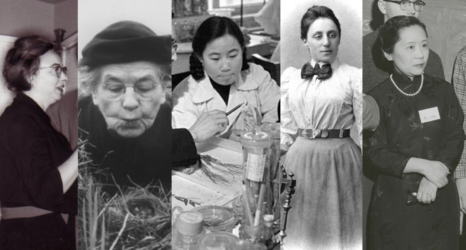Due to the actions of a young girl from the Swat Valley of Pakistan, the name Malala has become synonymous with bravery and strength. What most people may not know is that Malala Yousafzai’s namesake already had that meaning.
Malalai of Maiwand was another teenage warrior who rose to prominence in the late 19th century. Her self-sacrifice on the battlefield led to a crucial victory against the British in the Anglo-Afghan War, and she became a celebrated martyr in a historical tradition that rarely mentions the contributions of women.
In the forthcoming documentary He Named Me Malala, an interviewer asks Malala’s father, Ziauddin Yousafzai, “You named her after a girl who spoke out and was killed. It’s almost as if you said she would be different.”
With a little smile and nod, Ziauddin replies, “You’re right.”
So begins an intimate and charming portrait of the young girl who became the face of a girls’ empowerment movement. Participant Media, the same team behind the critical hits An Inconvenient Truth and Waiting for Superman, delves into the moving relationship between Malala and her father, showing how they embolden and galvanize each other.
Though Malala is now a Nobel Peace Prize winner, one of Time magazine’s “100 Most Influential People” and a household name, the documentary never lets the viewer lose sight of what she is behind all that: a 17-year-old girl. Malala was a girl before that fateful day on the school bus when a Taliban insurgent shot her in head, and she remained a girl after. A girl who impishly teases her brothers, has a crush on tennis star Roger Federer and worries about passing her physics exam.
In the documentary, she explains that if she had ordinary parents, she would be married with two children by now. It is estimated that one-fifth of girls in Pakistan are married before age 18, and with marriage comes the end of their education and independence. After facing an increased likelihood of death in pregnancy and childbirth, girls are tasked with raising children when they are children themselves.
The Obama administration has called child marriage a violation of girls’ rights, and organizations like Girls Not Brides, the Kakenya Center for Excellence and Girls Learn International (a program of the Feminist Majority Foundation, which publishes Ms.) work to abolish child marriage and remove barriers to education.
Ashley Steimer-King, program director of GLI, says,
Malala is a perfect example of what can happen when girls understand their own human rights. Young people are the experts on their own lives, and it took someone like Malala, a girl herself, to turn global attention to the societal problems that keep girls out of school.
He Named Me Malala takes us on a journey through Malala’s rise to activism, the attempt on her life, her months of recovery in an English hospital and her current advocacy for girls’ education. We see Malala in Nigeria meeting with the afflicted families after the abduction of 200 schoolgirls. We see her stand before the United Nations to give an unforgettable address. We see the origin story of a hero.
Says Malala in the film: “I tell my story not because it is unique. It is the story of many girls.”
He Named Me Malala hits select theaters on October 2.












